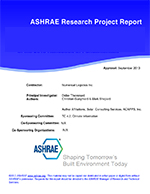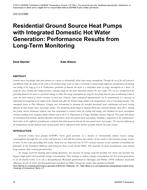Formulates refrigerant circuiting design issues in terms of an optimisation problem where the objective is minimisation of heat exchanger volume per unit heat transfer. A systems viewpoint is taken wherein appropriate constraints on heat exchanger duty and refrigerant-side pressure drop are selected to ensure that each refrigerant circuiting option provides equivalent system behaviour. Examines the effects of tube diameter and tube shape on refrigerant circuiting design. A single-phase heat exchanger analysis is performed, showing that smaller tube diameters a) reduce heat exchanger internal volume; b) require additional, parallel refrigerant passages; and c) require reduced refrigerant tube length. The analysis shows that port shape has a significant impact on heat exchanger volume and refrigerant circuiting. Noncircular ports are shown to yield smaller external heat exchanger volume, while circular ports provide smaller heat exchanger internal volume. Notably, proper design of refrigerant circuiting is the key to heat exchanger volume reduction. Finally, shows the results of the single-phase heat exchanger analysis are applicable to two-phase situations if convective effects are dominant (e.g., annular flow condensation and convective boiling).
KEYWORDS: year 1996, refrigerants, condensers, fluid flow, heat exchangers, pressure drop, compact heat exchangers, turbulent flow, sizing, tubes, designing, heat flow, measuring, calculating
Citation: Symposium, ASHRAE Trans. 1996, Vol.102, Part 2
Product Details
- Published:
- 1996
- File Size:
- 1 file , 1000 KB
- Product Code(s):
- D-16589


